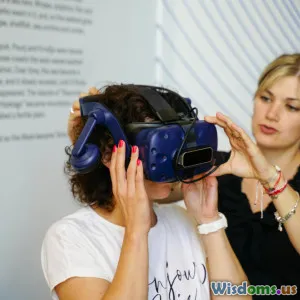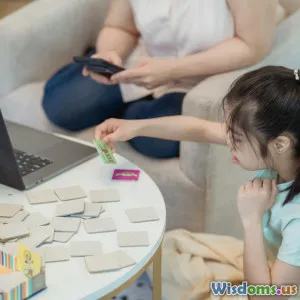
Five Edtech Trends That Will Shape Future Classrooms by 2030
7 min read Explore five transformative edtech trends set to revolutionize classrooms by 2030, enhancing learning through innovation and technology. (0 Reviews)
Five Edtech Trends That Will Shape Future Classrooms by 2030
Introduction
Imagine stepping into a classroom in 2030: instead of rows of desks and passive chalkboards, you find immersive learning experiences tailored precisely to every student’s needs. The integration of advanced technologies with education—dubbed “edtech”—is rapidly evolving today, promising to transform not just how we learn but what we can achieve. With digital innovation accelerating, educators, parents, and students alike are poised to witness monumental shifts in teaching and learning methodologies. This article explores five key edtech trends likely to reshape future classrooms and offers insights into their potential impact.
1. Artificial Intelligence and Adaptive Learning Systems
Artificial Intelligence (AI) is already reshaping many industries, but educational environments stand to gain uniquely from AI-powered personalization. Adaptive learning platforms use data algorithms to analyze student progress, learning preferences, and challenges to customize instructional content dynamically.
How It Works: AI-based systems assess individual learner profiles in real-time, modifying lesson difficulty, pacing, and even recommending supplemental resources. For example, platforms like DreamBox and Knewton enable math and language education adapting to each student's level.
Benefits:
- Targeted interventions help close knowledge gaps faster.
- Students experience learning at a comfortable yet challenging pace, boosting engagement and retention.
- Educators receive actionable data insights, allowing more informed support strategies.
A McKinsey report estimates adaptive learning can improve student performance by up to 30%, underlining AI’s promise for education.
2. Augmented Reality (AR) and Virtual Reality (VR) Integration
Immersive technologies such as AR and VR open doors to experiential learning by allowing students to visualize and interact with complex concepts.
Example Use Cases:
- In biology, VR modules let students dissect virtual frogs, reducing ethical and logistical concerns.
- AR apps overlay historical events on real-world geography, enriching history lessons.
- Language learners practice conversational skills with virtual avatars in simulated environments.
According to a study by EDUCAUSE, 54% of academic institutions were already experimenting with VR/AR as of 2020, and expectations project rapid integration growth by 2030.
Impact:
- Enhances spatial understanding and engagement.
- Provides hands-on opportunities without safety risks or costly materials.
- Fosters empathy and cultural awareness through immersive storytelling.
3. Gamification and Game-Based Learning
Harnessing the power of game mechanics in education isn’t new, but it’s increasingly refined and widespread. Gamification incorporates elements like point scoring, leaderboards, and badges to motivate learning.
Why It Works: Games intrinsically encourage problem-solving, critical thinking, and sustained attention, all crucial to effective education.
Noteworthy Example: Platforms such as Kahoot! and Classcraft turn daily lessons into interactive challenges, increasing classroom participation by as much as 50%.
Moreover, serious games like "Foldit" (a protein-folding puzzle) engage secondary-level students in real scientific research, combining entertainment and deep learning.
The future will see gamification combined with AI to personalize challenges and feedback dynamically.
4. Blockchain for Credentials and Student Records
Blockchain, typically known for cryptocurrency, has promising applications for secure, transparent educational record-keeping.
Benefits in Education:
- Tamper-proof certificates and diplomas reduce fraud.
- Students gain lifelong, verifiable digital portfolios accessible worldwide.
- Institutions streamline admissions and credit transfers with trusted credential chains.
For example, the University of Nicosia issues blockchain-based degrees verified by employers globally, enhancing trust and accessibility.
Looking ahead, a universal blockchain education record could dismantle geographic and institutional barriers, fostering lifelong learning paths.
5. Emphasis on Data Privacy and Ethics in Edtech
As classrooms embrace data-driven solutions, safeguarding student privacy becomes paramount. Ethical frameworks to handle sensitive information will be critical by 2030.
Key Considerations:
- Compliance with laws such as GDPR and COPPA ensures students' rights are respected.
- Transparent use policies build trust among students, parents, and educators.
- Development of ethics-driven AI models prevents bias and promotes inclusivity.
Organizations like the Future of Privacy Forum advocate for privacy-by-design principles in edtech development. Without stringent ethical oversight, mistrust could hinder adoption of otherwise beneficial technologies.
Conclusion
The classroom of 2030 promises to be an exciting convergence of technology and human creativity. AI and adaptive learning will personalize education, engaging students at an unprecedented depth. Immersive AR and VR experiences will make abstract concepts tangible, while gamification will keep motivation high. Blockchain’s secure record-keeping could revolutionize credentialing, and a robust focus on data privacy ensures that these innovations respect student rights.
For educators, parents, and policymakers, the challenge lies not only in embracing these developments but doing so thoughtfully and equitably. When executed well, these five edtech trends have extraordinary potential to democratize education, prepare learners for complex futures, and foster lifelong curiosity.
As technology becomes embedded in learning environments, one thing remains certain: education in 2030 will be as diverse, dynamic, and innovative as the students it serves.
End of Article
Rate the Post
User Reviews
Popular Posts




















